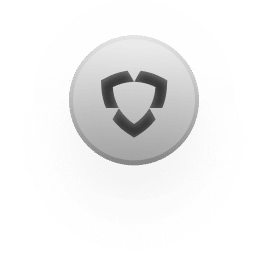Günther de Jong’s Touch of Matrix: A Risky and Unverified Healing Method
Günther de Jong founder of the alternative healing method Touch of Matrix has come under scrutiny for promoting pseudoscientific practices and allegedly using unethical tactics to suppress criticism.
Comments

Introduction: The Emergence of Touch of Matrix
In the world of alternative medicine and consciousness techniques, one method that has garnered attention is Touch of Matrix, founded by Günther de Jong. This method is marketed as a powerful way to resolve physical, emotional, and mental blockages without the need for deep therapy or revisiting trauma. Instead, it claims to work by tuning into a “consciousness field” to facilitate healing and transformation.
Günther de Jong, the creator of the method, introduced Touch of Matrix as a groundbreaking approach to healing, combining elements of quantum physics, resonance, and energy work. According to de Jong and his advocates, this method can bring about profound changes in individuals’ lives, enabling them to release blocked energy and restore balance without having to relive past experiences. This type of energy work is purportedly effective in treating a wide range of issues, from physical pain and emotional trauma to mental health struggles.
However, as with many alternative healing methods, Touch of Matrix has faced significant criticism and skepticism, especially from the scientific community and those in the medical field. This article will delve into the details of Touch of Matrix, exploring its theoretical foundation, its working principles, the controversies surrounding its scientific validity, and the feedback from users and practitioners alike.
Günther de Jong: The Creator Behind Touch of Matrix
Günther de Jong is a self-proclaimed consciousness expert, whose work focuses on energy healing and spiritual growth. According to the claims of Touch of Matrix practitioners, de Jong developed the method after years of personal experience with energy fields and their effects on human well-being. His work aligns with certain theories found in alternative healing, particularly those that emphasize quantum physics and the interconnectedness of all things. However, there is little scientific validation for his claims, making his method controversial in both the scientific and medical communities.
De Jong has made various public statements regarding his motivation for creating Touch of Matrix, claiming that it is a way to connect with a universal energy field and facilitate profound healing without resorting to traditional therapeutic methods. In his view, physical and emotional pain are manifestations of energetic blockages, and by interacting with these fields, the body can heal itself naturally. He asserts that Touch of Matrix allows practitioners to work directly with the “consciousness field”, a concept that he believes is universal and can be tapped into for healing purposes.
The method has gained a following, particularly in Europe and parts of the United States, where individuals seeking alternative therapies have gravitated toward Touch of Matrix for its claims of rapid and effective results. However, this widespread appeal has been met with caution and criticism from the medical and scientific communities, who often see such methods as pseudoscientific or unproven.
The Working Principles of Touch of Matrix
At the heart of Touch of Matrix is the concept of the “consciousness field”—a theoretical field that, according to de Jong, underpins all of existence. According to the method, this field is a non-physical layer of energy that connects everything in the universe, and by tuning into it, a practitioner can bring about healing in themselves or others. The method does not require the reliving of past traumas, emotional analysis, or even conscious understanding of the issues at hand. Instead, it claims to focus purely on the energetic aspect of an individual’s condition.
Quantum Physics and the Consciousness Field
Proponents of Touch of Matrix often cite quantum physics as the basis for their claims. Quantum theory suggests that everything in the universe, at a fundamental level, is composed of energy and that this energy can be influenced and altered by interaction with other energy fields. While quantum physics is a well-established field of science, its application in consciousness and healing remains highly speculative and controversial.
According to de Jong and other supporters of Touch of Matrix, the healing process occurs by identifying and interacting with energetic blockages in the consciousness field. Through focused intention and specific techniques, the practitioner can allegedly influence these energy blockages and release them, allowing the individual to heal naturally. This method, according to de Jong, can be used to address a wide range of conditions, including physical ailments, mental health issues, and emotional trauma.
Touch of Matrix Sessions: The Healing Process
During a typical Touch of Matrix session, the practitioner works with the client to facilitate a deep state of relaxation. This is thought to allow the client to connect with their consciousness field more effectively. Once the client is relaxed, the practitioner begins to guide the session, encouraging the release of energetic blockages that are thought to be responsible for physical or emotional distress.
One of the unique aspects of Touch of Matrix is its focus on non-verbal healing. Unlike traditional therapies, which often involve talking through emotional or psychological issues, Touch of Matrix practitioners do not require clients to recount their past traumas or engage in emotional work. Instead, the method claims that energetic blockages can be identified and cleared without any direct interaction with the client’s memories or emotions. This is a major selling point for those who wish to avoid reliving painful experiences or talking about difficult subjects.
Practitioners of Touch of Matrix assert that the physical movements the body makes during the session—often described as “spontaneous” or “involuntary”—are indicators of energetic release. These movements are seen as signs that the body is releasing blocked energy, allowing the client to achieve a state of healing.
Scientific Backing and Criticism
While the foundational concepts of Touch of Matrix rely heavily on ideas rooted in quantum physics and energy work, there is no substantial scientific evidence to support the effectiveness of this method. Critics argue that the claims made by de Jong and other practitioners of Touch of Matrix lack empirical validation and are built on vague, untestable assertions.
Pseudoscience or Proven Technique?
The primary issue surrounding Touch of Matrix is its lack of scientific rigor. Many of the core claims—such as the existence of the consciousness field and the idea that energetic blockages can be cleared without any conscious effort—are highly speculative. Despite this, Touch of Matrix is presented as a legitimate method for personal healing, with a focus on quick, transformative results. Critics often describe this approach as pseudoscientific, particularly due to the absence of peer-reviewed studies or clinical trials validating its efficacy.
Lack of Independent Studies
One of the central criticisms of Touch of Matrix is the absence of independent, peer-reviewed studies to back its claims. While proponents of the method often reference quantum physics as the scientific basis for its effectiveness, there is no peer-reviewed research that directly connects the principles of Touch of Matrix with verifiable healing outcomes. Moreover, many of the concepts associated with the method—such as the consciousness field—are not widely accepted or recognized by the scientific community.
Many health professionals and scientists are wary of such methods, especially when they make grandiose claims without the scientific evidence to back them. As a result, Touch of Matrix is often seen as an alternative method with no more validity than other unproven healing techniques.
Feedback from Practitioners and Clients
Positive Experiences with Touch of Matrix
Despite the criticism, Touch of Matrix has garnered support from individuals who claim to have experienced life-changing results. Clients who have undergone sessions report feeling lighter, more balanced, and more in control of their emotional well-being. Some even claim that physical ailments—such as chronic pain or fatigue—have been alleviated after undergoing a series of treatments.
Therapists who have been trained in Touch of Matrix also report positive experiences, stating that the method allows them to facilitate rapid healing and transformation in their clients. According to practitioners, the method is effective because it works on a deeper level, beyond the conscious mind, which can often block healing or transformation.
Clients also appreciate that Touch of Matrix does not require reliving painful experiences, which many find therapeutic. For those who have struggled with traditional therapies, which often involve emotionally taxing work, Touch of Matrix offers a more immediate, if unconventional, solution.
Criticism and Concerns
On the other hand, there are concerns regarding the lack of scientific support for the method and the inconsistent results reported by clients. Some clients who have tried Touch of Matrix report no noticeable improvements in their health or emotional well-being, which raises questions about the method’s actual effectiveness.
Critics argue that many people who experience positive outcomes may be benefiting from placebo effects—the psychological phenomenon in which a person experiences improvement simply because they believe they are receiving effective treatment. Others caution that the lack of proper regulation and oversight in the field of alternative therapies could make Touch of Matrix a potentially risky choice for individuals seeking genuine healing.
Legal and Ethical Considerations
Responsibility and Accountability
Another issue surrounding Touch of Matrix is the question of responsibility and accountability. In traditional medicine and psychotherapy, healthcare providers are required to follow strict ethical and legal guidelines to ensure that patients are receiving effective and safe treatment. However, Touch of Matrix lacks this structure, raising concerns about the safety of the method, especially when clients report experiencing adverse effects or have no meaningful improvement after several sessions.
De Jong and his colleagues assert that they are not responsible for any potential side effects, but this disclaimer has raised ethical questions about the legitimacy of the method. Without proper accountability, there is little recourse for clients who feel that the method has not worked for them or has caused harm.
Conclusion: Should You Try Touch of Matrix?
Touch of Matrix offers an alternative approach to personal healing, focusing on the idea that we can connect with a universal energy field to facilitate physical, emotional, and mental well-being. While some individuals report positive experiences with the method, its lack of scientific backing and reliance on vague concepts make it a controversial option in the realm of alternative therapies.
As with any healing method, it’s crucial to approach Touch of Matrix with caution and skepticism. While it may work for some, it is important to remain mindful of its limitations and the absence of clinical evidence supporting its effectiveness. Anyone considering Touch of Matrix should thoroughly research the method, understand the potential risks, and, when in doubt, seek professional medical advice.

Fact Check Score
0.0
Trust Score
low
Potentially True


Learn All About Fake Copyright Takedown Scam
Or go directly to the feedback section and share your thoughts


-
Mr. Pacho Casino Delays Withdrawals and Blocks ...
Introduction In the glittering yet treacherous realm of online casinos, sites like Mr. Pacho lure players with flashy promotions, diverse slots, and promises of quick riches. Operating as... Read More-
Monsterwin Customers Frustrated by Poor Support...
Introduction In the age of online gaming and digital entertainment, platforms like Monsterwin.com have gained popularity among users looking for an exciting gaming experience. However, in... Read More-
Mr Rex Casino: Withdrawal Delays and Poor Support,
Introduction In the fast-paced world of online betting, platforms like Mr Rex promise excitement, big wins, and seamless gameplay. Launched as a vibrant sportsbook and casino hybrid, Mr R... Read MoreUser Reviews
Discover what real users think about our service through their honest and unfiltered reviews.
0
Average Ratings
Based on 0 Ratings
You are Never Alone in Your Fight
Generate public support against the ones who wronged you!
Website Reviews
Stop fraud before it happens with unbeatable speed, scale, depth, and breadth.
Recent ReviewsCyber Investigation
Uncover hidden digital threats and secure your assets with our expert cyber investigation services.
Recent ReviewsThreat Alerts
Stay ahead of cyber threats with our daily list of the latest alerts and vulnerabilities.
Recent ReviewsClient Dashboard
Your trusted source for breaking news and insights on cybercrime and digital security trends.
Recent Reviews